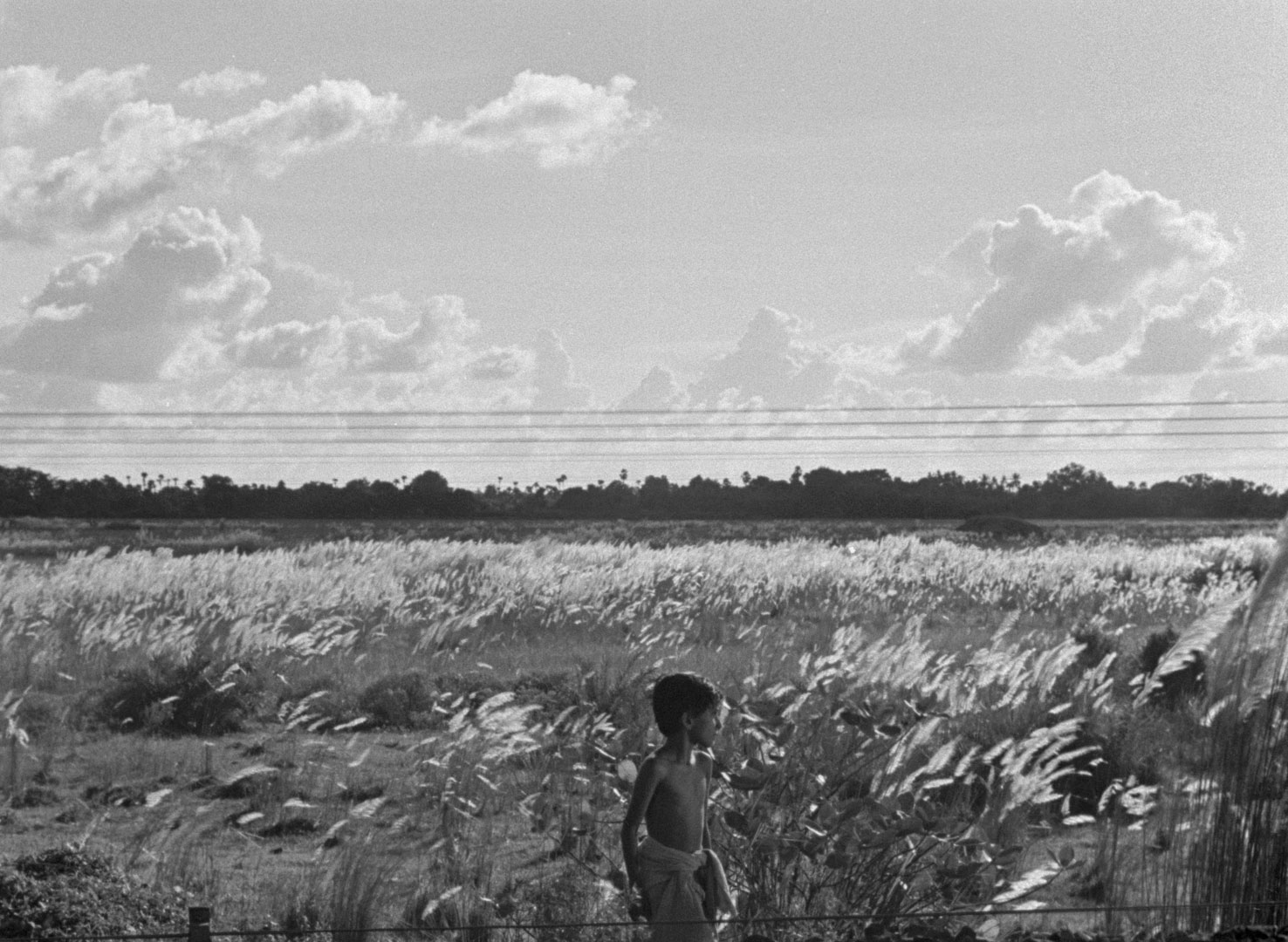Because of funding problems, it took Calcutta-born filmmaker Satyajit Ray three years to complete his debut film, Pather Panchali. It’s one of those movies that exists almost against all odds, and also one of the most beautiful films ever made, in any language. It’s unlikely your childhood was anything like Apu’s, yet his story is a dream of every childhood, a recollection—or a wish—of love and family that reaches deep inside us. Young Apu (Subir Banerjee) lives in the Bengali countryside with his mother and father (Karuna Banerjee and Kanu Banerjee), his older sister, Durga (Shampa “Runki” Banerjee), and an elderly live-in auntie (Chunibala Devi). Apu’s father comes from a long, proud lineage of writers, but he has failed to make a good living for his little family; they once owned a nearby orchard, but they’ve had to sell it off to survive. Apu is often impish and naughty, but his family adores him, building a world of warmth and care for him despite their financial difficulties. Ray, in gorgeously silvery black-and-white cinematography, captures the texture of childhood—in the way, for instance, Apu and Durga rush out into the fields when the train passes by, excited by its speed and noise and promise of some mysterious elsewhere. The beauty of Pather Panchali (adapted from an autobiographical novel by Bengali writer Bibhutibhushan Bandyopadhyay) is matched by its two superb sequels, Aparajito, from 1957, and Apur Sansar, from 1959. These rapturous meditations on the power of memory, and on the nature of love and loss, are for all of us to enjoy. Akira Kurosawa said, “Not to have seen the cinema of Ray means existing in the world without seeing the sun or the moon.” If you won’t take my word for it, take his.
- How Donald Trump Won
- The Best Inventions of 2024
- Why Sleep Is the Key to Living Longer
- Robert Zemeckis Just Wants to Move You
- How to Break 8 Toxic Communication Habits
- Nicola Coughlan Bet on Herself—And Won
- Why Vinegar Is So Good for You
- Meet TIME's Newest Class of Next Generation Leaders
